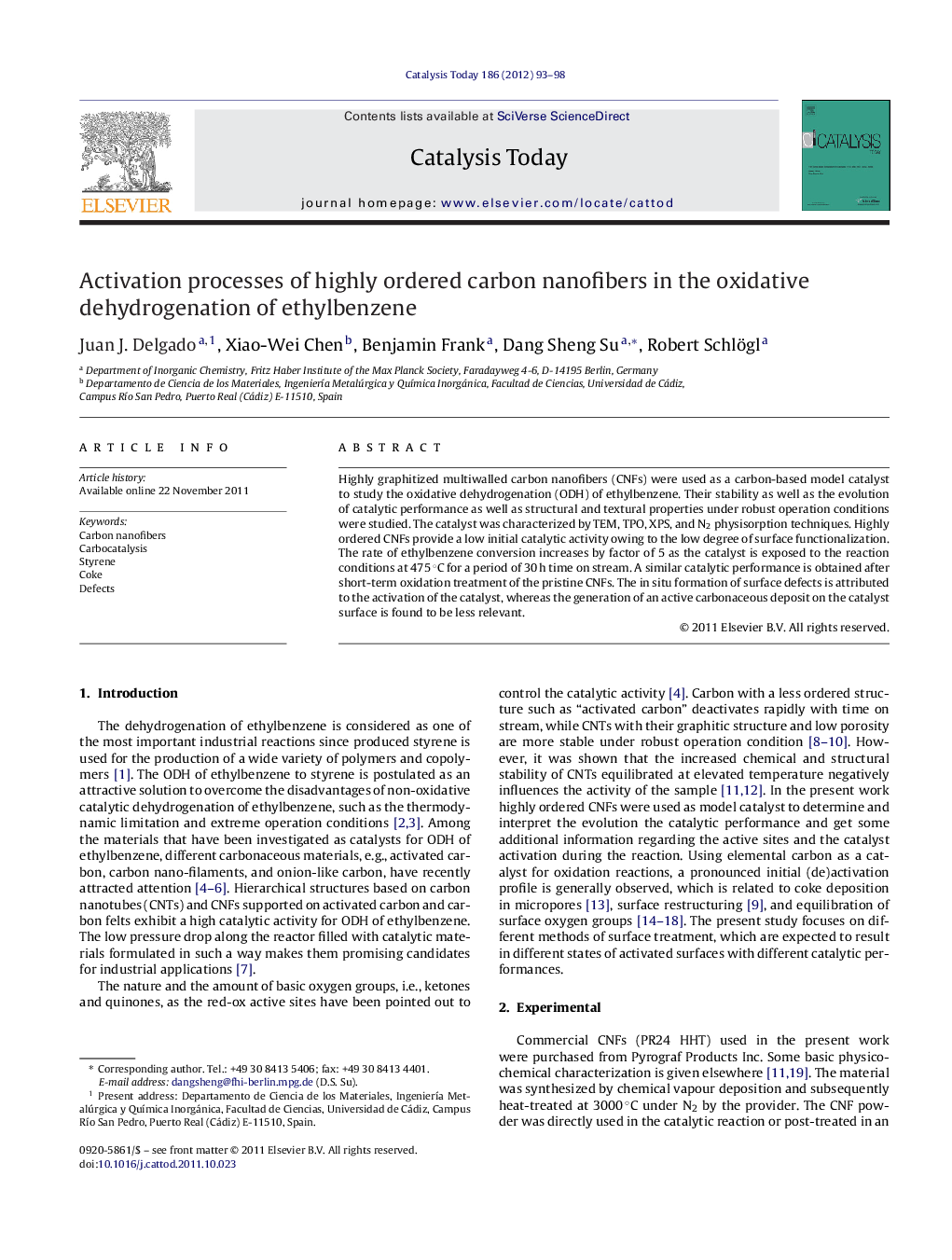| کد مقاله | کد نشریه | سال انتشار | مقاله انگلیسی | نسخه تمام متن |
|---|---|---|---|---|
| 55487 | 47055 | 2012 | 6 صفحه PDF | دانلود رایگان |

Highly graphitized multiwalled carbon nanofibers (CNFs) were used as a carbon-based model catalyst to study the oxidative dehydrogenation (ODH) of ethylbenzene. Their stability as well as the evolution of catalytic performance as well as structural and textural properties under robust operation conditions were studied. The catalyst was characterized by TEM, TPO, XPS, and N2 physisorption techniques. Highly ordered CNFs provide a low initial catalytic activity owing to the low degree of surface functionalization. The rate of ethylbenzene conversion increases by factor of 5 as the catalyst is exposed to the reaction conditions at 475 °C for a period of 30 h time on stream. A similar catalytic performance is obtained after short-term oxidation treatment of the pristine CNFs. The in situ formation of surface defects is attributed to the activation of the catalyst, whereas the generation of an active carbonaceous deposit on the catalyst surface is found to be less relevant.
Highly graphitized multiwalled carbon nanofibers (CNFs) were used as a model catalyst to study the oxidative dehydrogenation (ODH) of ethylbenzene. Their stability as well as the evolution of structural and textural properties under robust operation conditions was studied. Highly ordered CNFs provide a low initial catalytic activity, which increases by factor of 5 as the catalyst is exposed to the reaction conditions. In situ formation of surface defects as well as the generation of an active carbonaceous deposit on the catalyst surface contribute to the activation of the catalyst.Figure optionsDownload high-quality image (142 K)Download as PowerPoint slideHighlights
► The contributions of “coke” and “surface defects” to catalytic performance of carbon catalyst in the ODH of ethylbenzene could be separated.
► Coke is less active and acts more as a spectator.
► Surface defects are the host for active sites, i.e., quinone groups.
► The long induction period of carbon catalysts can be drastically shortened by oxygen treatment at elevated temperature.
Journal: Catalysis Today - Volume 186, Issue 1, 1 June 2012, Pages 93–98